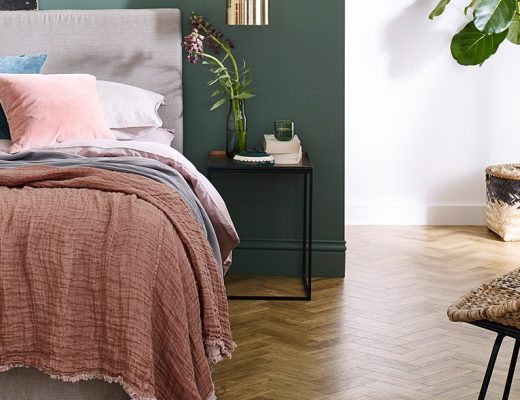A fresh lick of paint can do wonders to your kitchen, bedroom and bathroom – but why stop at the walls? Discover how painting small architectural details is a low-risk, high-impact design decision…
I love a dose of dopamine when it comes to design, so when I started noticing colour-drenched interior door and window frames in recent home renovations, I knew I had found my next DIY project. To find out more about this decorating technique, and steal a few ideas for myself too, I decided to speak to some industry experts.

Firstly, you may be wondering why you should do it. Annie Sloan, colour expert and founder of the eponymous paint brand, tells me, “Painting your door or window frames is a low-risk, low-commitment, high-colour payoff”. And I couldn’t agree more. “Doors and windows are a great place to make a statement with colour. We’re often forced to pause when we open a door or window, so they are great places to engage our attention with a flash of bright colour,” Annie adds.
Colouring these small architectural details is ideal for breathing life back into your kitchen, bedroom or bathroom. But what do you need to know before picking up the paintbrush?


Feature frames know-how
In terms of practicalities, it’s important to consider the paint finish for your window and door frames. “Choosing the right finish depends on the goal for the space: glossy for a modern look, or matt and satin for a softer ambience. Make sure you choose the right product to ensure durability – for example, a specific wood paint for wooden frames. And always use a primer,” advises Dominic Myland, chief executive officer at paint company Mylands.
“Test the shade in natural light before committing, ensuring the selected colour complements the overall design. The result is a bold statement that elevates any interior, adding energy and visual appeal,” he adds.

Ways with painted frames
Choosing the colour for features such as window frames and skirting boards, is like “the final piece of the jigsaw”, according to Katrina Dalley, interior design and trade sales executive at maximalist interiors brand House of Hackney. “There are different routes you can go. If you are using wallpaper for the main walls, pick a key colour within the print that you feel hasn’t had the limelight it deserves,” she says.


Another way of embracing this painting technique is to pick an unexpected colour, such as red, to really make the frames stand out. “A bright red, associated with passion and warmth, pairs well with neutrals or warmer hues, allowing you to introduce strong colour in a way that will not overwhelm,” says Dominic.
Ready to say goodbye to plain white and paint outside the lines?







